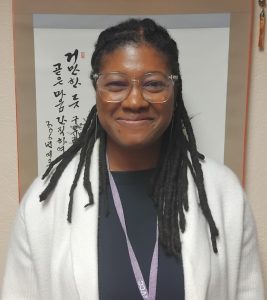Broadway sent nudes, along with minority representation during the Sexual Revolution
November 29, 2018
Nudity took the Broadway stage by storm and shocked audiences during the sexual revolution, but it brought with it representation for oppressed communities.
“The Rocky Horror Show” was one startling title that hit the stage in 1974 and has been stunning audiences ever since.
This musical is packed with representation across the board: the most memorable character, Frank ‘N’ Furter, is transexual and bisexual; one of the main characters, Brad Majors discovers his bisexuality; the other main character, Janet Weiss, is a timid young woman who comes into her sexuality.
To the naked eye, the performance seems like a dark portrayal of these communities, but there is satire at
play that creates the themes that shame heteronormativity and conservatism.
Explained thespian Bailey Banks, “Rocky Horror” was a great indicator of the progression of sexual fluidity, especially for its time of release.
“The portrayal of [Frank ‘N’ Furter and his housemates] as aliens from the planet Transylvania satirizes the alienation of the LGBT+ community as well as the taboo ridicule of sex as a whole during this time period. The [musical] is brimming with activism and progression, which I believe is what made [it] gain such a following.”
But not every shocking image that came out of Broadway at the time was for progression. “Oh! Calcutta!” made it to the West End theatre in 1970, and its only great effect was its shocking nature.
“It’s a very sexual show. It’s not sexy; it’s sexual, and it’s kind of a cheap shot for the sake of a cheap shot… It’s just shock for shock’s sake. It wasn’t funny. It was the ticket to get because it was something that hadn’t been seen yet,” said IVCC stage director Don Grant Zellmer.
The show is a series of skits on sex that ended up more vulgar than liberating.
Zellmer continued, “There’s a difference between sexual and sexy. And I think that’s what people get confused with. It’s like when I worked in Vegas… You’ve got these women in these somewhat revealing costumes, but they’re presenting themselves in a way that’s sexy and coy as opposed to sexual and gross. There’s a big difference between that.
“And the same goes for shows. It’s like ‘Oh! Calcutta!’—that was just sexual and pointless, whereas ‘Chicago’… is a very sexy show where the women are the smartest ones in the room, and they use their sexiness to their advantage.”
“Chicago” found the Broadway stage at the tail end of the sexual revolution in 1979. Its main characters are mostly women who find themselves cheated by a system that expects them to be soft and perfect for the male gaze but still emotionally hardened and easy-going.
This leads the two female leads to murder, which is how they find themselves in the same Chicago jailhouse.
Although sexy, rather than sexual, the show has roots in the sexual revolution for its themes of female
rebellion against a society that expects them to be pulled in too many directions.
In the end, this theme is solidified when, out of prison, the women find themselves with no work and no support, and they team up, employ themselves and start a double act together.
Within just these three theatrical examples, Broadway showed many colors during the sexual revolution, which is why it became so popular with and such a safe haven for women and the LGBTQA+ community.
There is a stereotype that straight men cannot stand to sit through a Broadway show, and part of that is due to lack of exposure via the societal expectation that a modern American man’s time should be spent working,
rather than doing stereotypically feminine tasks such as enjoying art.
However, this stereotype is also brought on by the fact that much of Broadway stands to liberate oppressed communities. “The Rocky Horror Show” and “Chicago” are just two examples of this, but they are two examples where straight men aren’t the hero and center of attention as they typically have been in media since its
dawning.
Therefore, with Broadway’s sexual revolution came new types of heroes for audiences to relate with and thus vastly broader representation.



